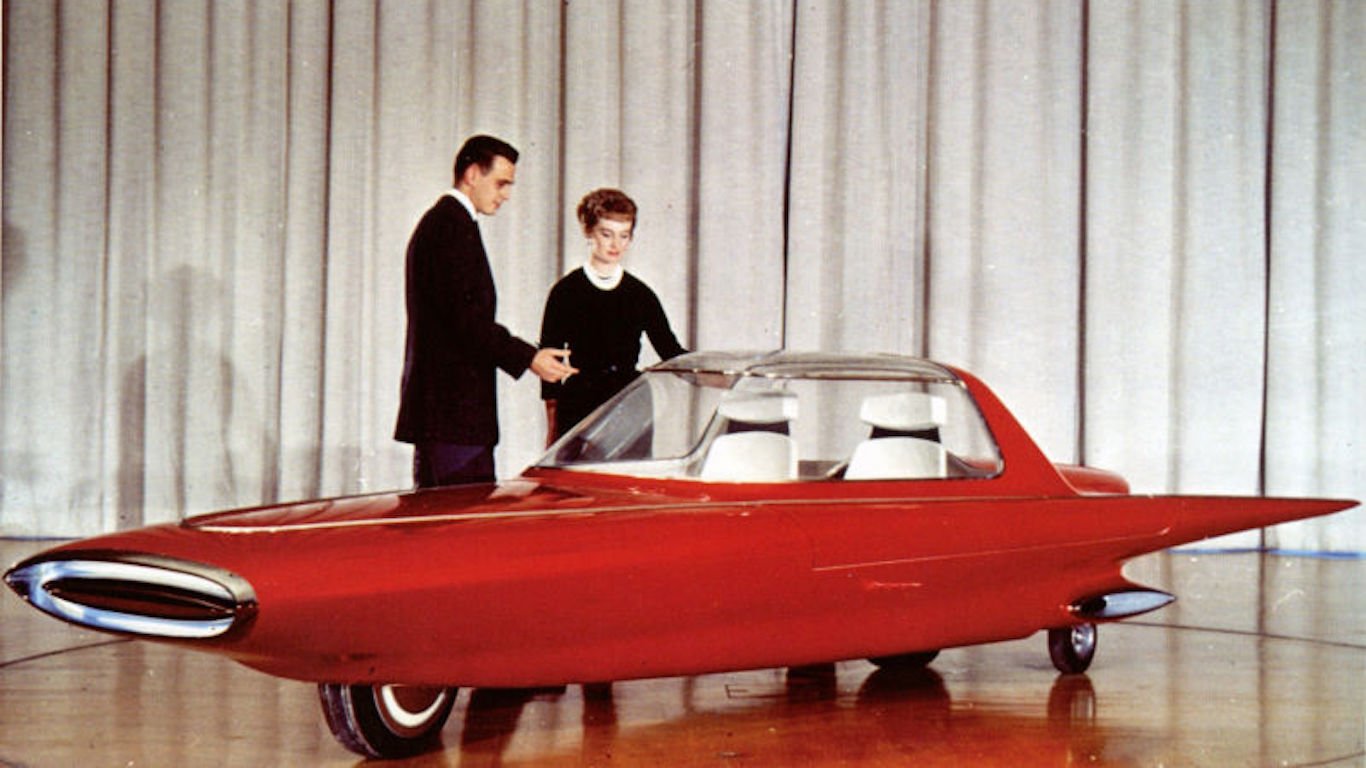

The only limit to the design of automobiles is the imagination of those conceiving them. And concept cars are the perfect vehicle — pun intended — to showcase new design features, technology, or possible future. Some of these prototypes never even made it past the scale model stage.
Since the early 20th century, car designers have taken into account such considerations as speed, safety, cost, style, and comfort. They’ve also been influenced by the space age, environmental concerns, and the needs of those living in cities.
Many of their ideas — such as automatic windows, rearview cameras, and climate control — were conceived off ahead of their time. Other ideas, like use of nuclear fusion or fission were impractical. Still others were rather odd. Here are some of history’s strangest car designs.
24/7 Wall St. has compiled a list of the most intriguing concept cars. We chose vehicles designed with features that either would become standard in cars that would be eventually produced; or introduced new styling; pushed the limits of speed; or challenged the conventions of the day. None of these prototypes ever made it to the production stage.
Click here to see the most intriguing concept cars that never saw the light of day

Buick Y-Job
> Company: General Motors
> Year introduced: 1938
The Buick Y-Job, created by legendary General Motors car builder Harley Earl, was dubbed by the 1930s automotive press as “the car of the future.” The vehicle had features that would eventually be found in cars of today, such as hidden headlights and electrically powered windows.
[in-text-ad]
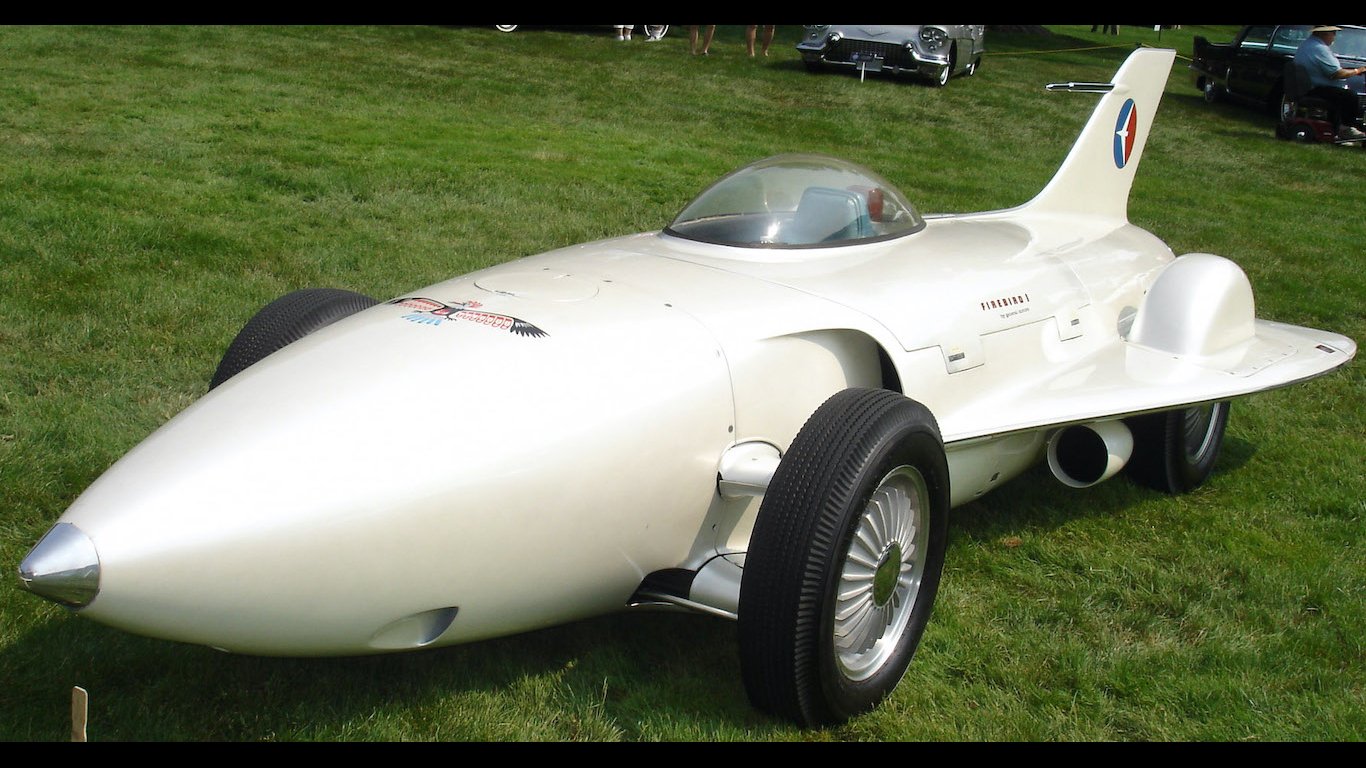
XP-21 Firebird I
> Company: General Motors
> Year introduced: 1953
Another creation of Harley Earl, the rocket-styled 1953 XP-21 Firebird 1 was the first gas turbine automobile built and tested in the United States. It was designed to determine whether the gas turbine could be used as an efficient power source for future cars. The idea for the Firebird came from renowned General Motors styling vice president, Harley Earl, who also designed the car’s fiberglass-reinforced plastic body.
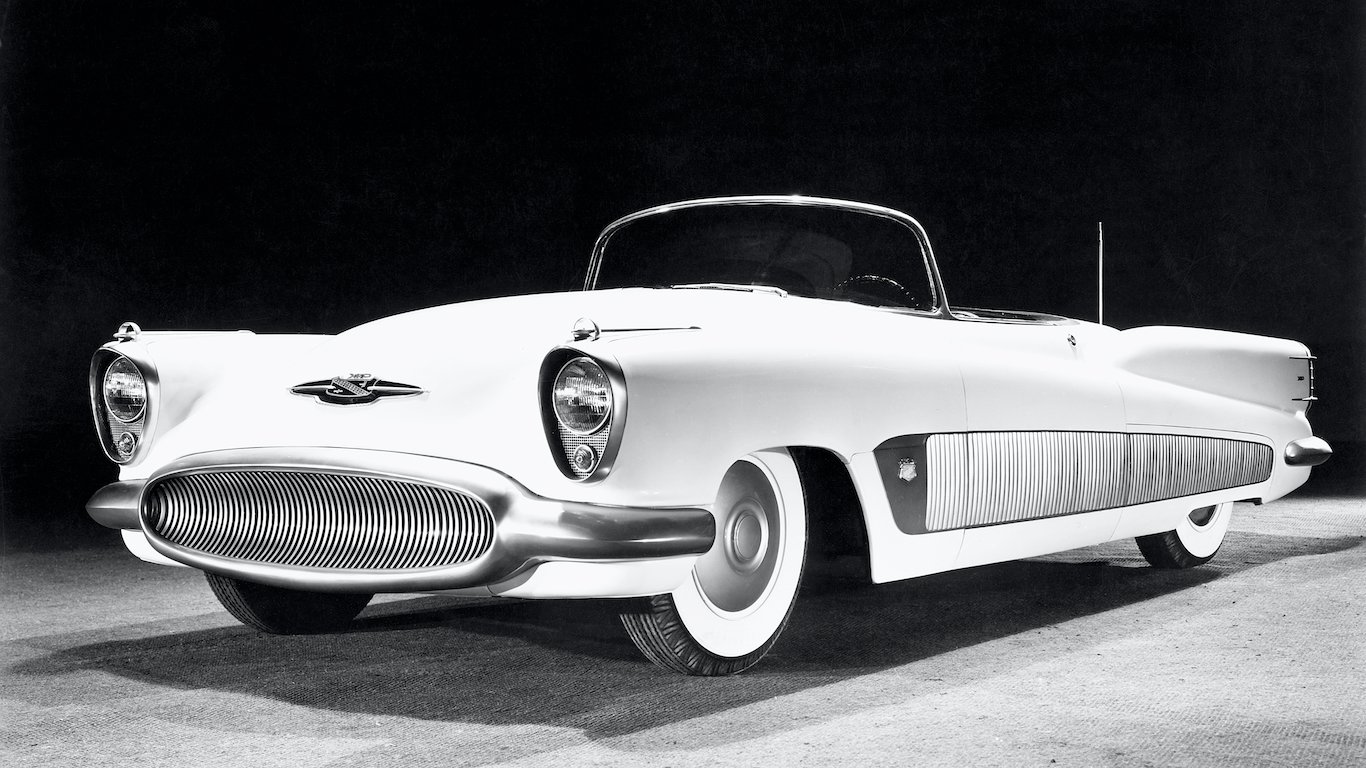
Buick XP-300
> Company: General Motors
> Year introduced: 1951
The Buick XP-300, created by Charles Chayne, vice president of engineering at General Motors, packed a 335-horsepower V8 engine that could run on either gasoline or methanol and may have been able to reach140 mph. The car features, such as push-button seats and windows, would be standard in future cars. The car’s styling was ahead of its time as well, including a slick grill, trim work, and fins that would eventually be found in GM cars .
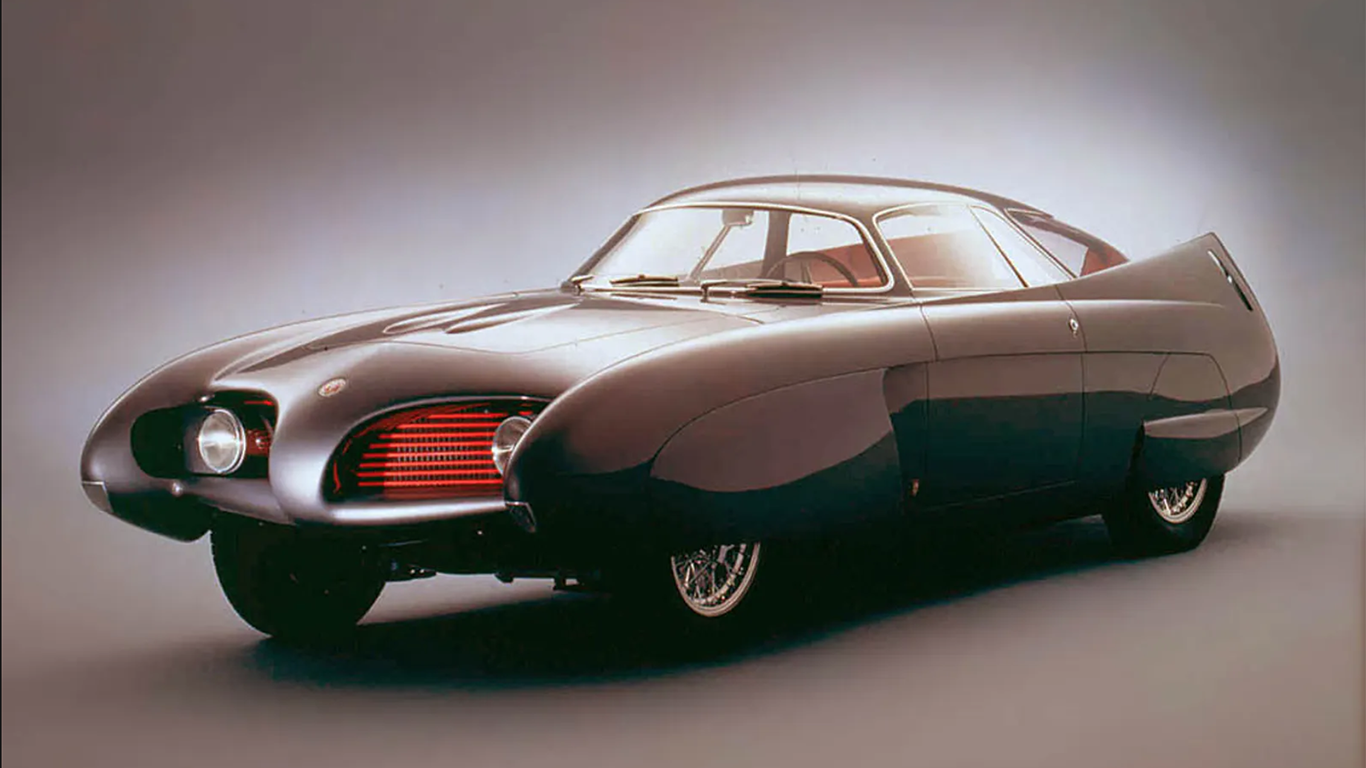
Alfa Romeo BAT
> Company: Alfa Romeo
> Year introduced: 1953
The Alfa Romeo BAT was a series of three concept cars beginning in 1953 created by car designer Giuseppe Bertone. The Italian car company wanted to make vehicles more aerodynamic. The lowest drag coefficient level achieved was remarkable by today’s standards. The cars sported massive rear bumpers and curved fins.
[in-text-ad-2]
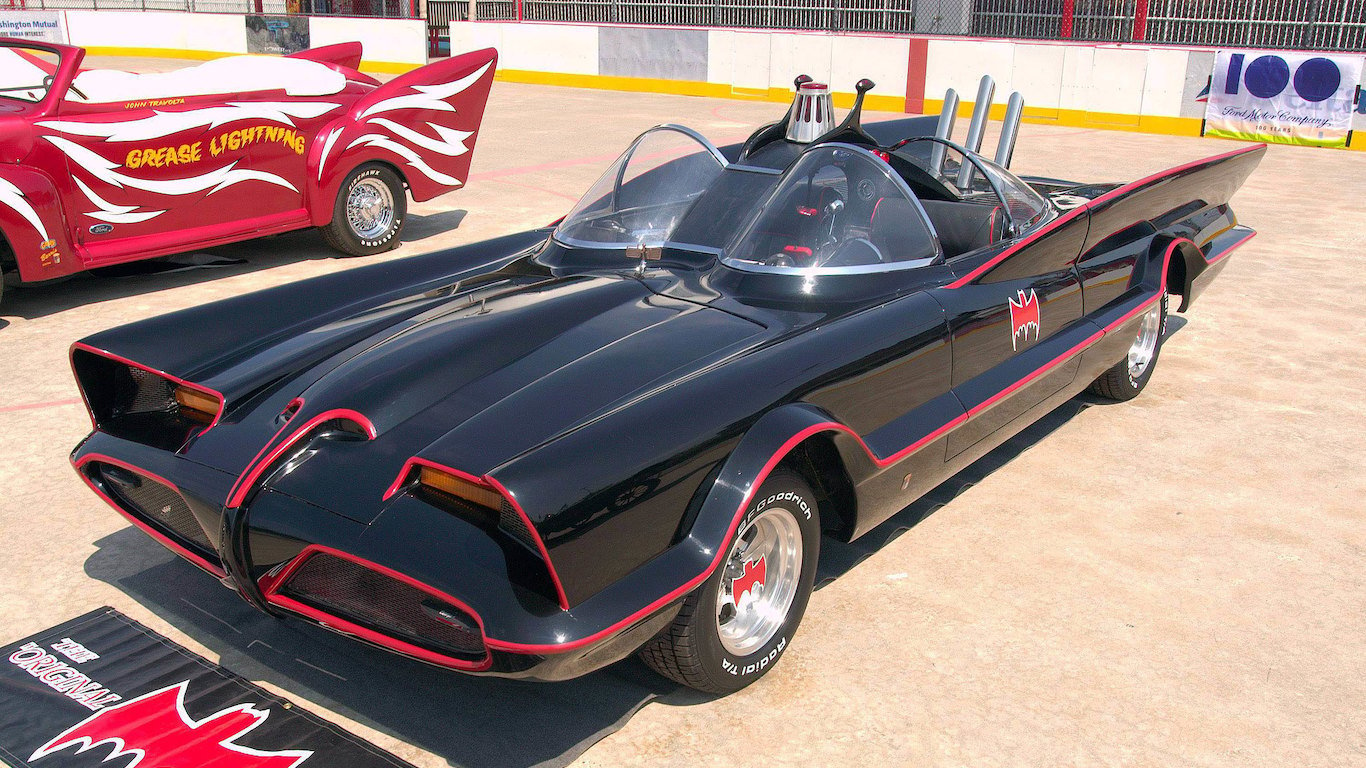
Lincoln Futura
> Company: General Motors
> Year introduced: 1955
The Lincoln Futura, with its bulbous clear-plastic canopy top and outward fins at either end of the car, was the inspiration for the Batmobile that would thrill TV audiences about 10 years later. The car chassis was from a Lincoln Mark II, and the vehicle was powered by a 368-cubic-inch engine.
The Futura was handmade by craftsmen from Italian car design company Ghia at a cost of $250,000. The car was created by Bill Schmidt, Lincoln-Mercury Division’s chief stylist in the post-World War II era. His idea for the Futura came from watching sharks and other sea life while on vacation in the Bahamas.

Ford La Tosca
> Company: Ford
> Year introduced: 1955
Ford’s La Tosca, with its sweeping tailfins and space-age plexiglass bubbletop, could be maneuvered by remote control. Its chassis was designed so that body shells could be quickly swapped for other body shells. The vehicle’s backup lights were modeled on jet tubes, and the headlights were retractable. The design of the car was used to create the 1958 Lincoln.
[in-text-ad]
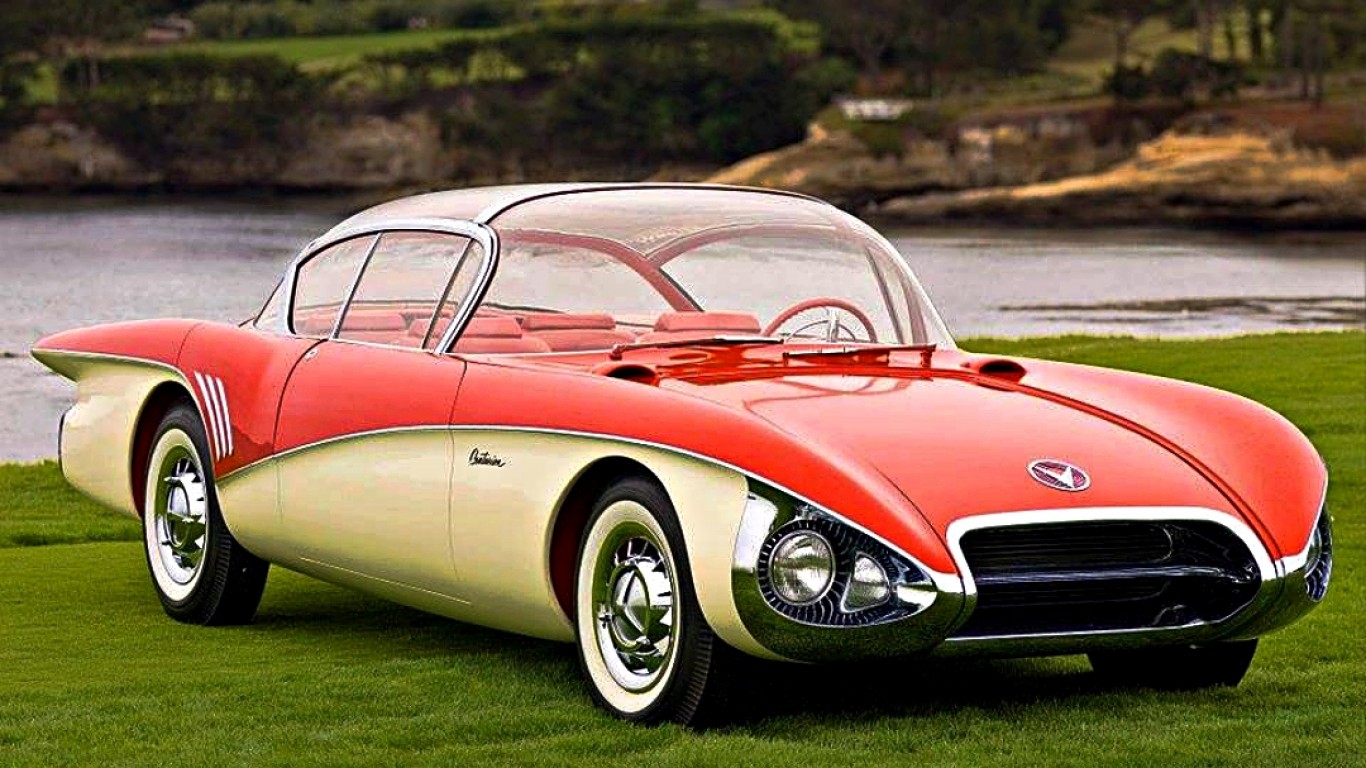
Buick Centurion
> Company: General Motors
> Year introduced: 1956
The body of the Buick Centurion was made from fiberglass, and the interior looked like an airplane cockpit, an inspiration from the jet age. The two-tone paint job and white-walled tires presented a slick image. The Centurion included a bubble top roof, and in the back it featured revolutionary winged fenders that would eventually be features of Buicks and Chevrolets in the late 1950s.
When you opened the door, the seats would slide back automatically. The concept car also had a television camera mounted in the rear that could alert the driver to traffic by way of a TV screen on the dashboard.
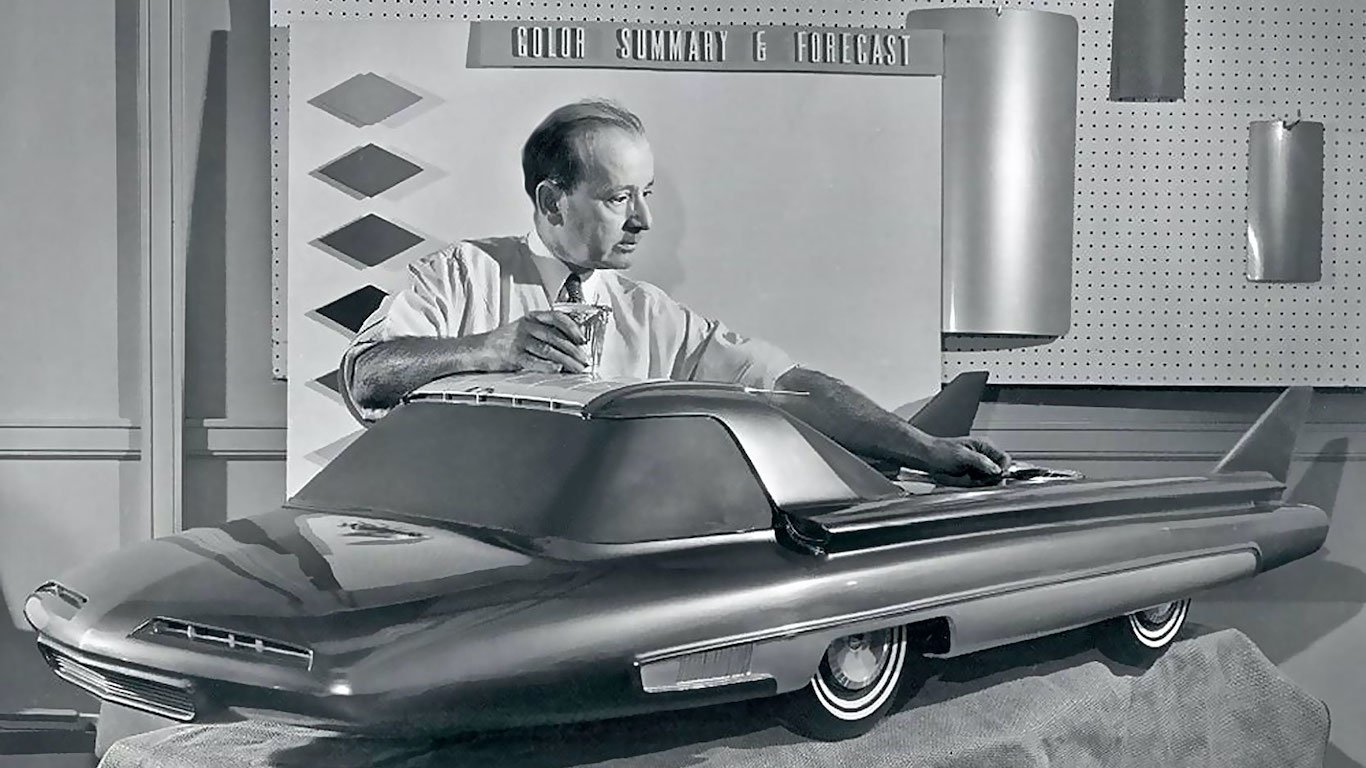
Ford Nucleon
> Company: Ford
> Year introduced: 1958
James Powers, a protege of Alex Tremulis, head of Ford Advanced Design, created the Ford Nucleon, a concept car designed as a future nuclear-powered car. The concept was only demonstrated as a scale model. The vehicle was to be powered by a small nuclear reactor in the rear of the vehicle and use a steam engine powered by uranium fission, a system similar to those found in nuclear submarines. It was designed with a range of 5,000 miles before refueling. The radioactive core of the vehicle would be exchanged when needed at charging stations, which Ford envisioned would replace gas stations.
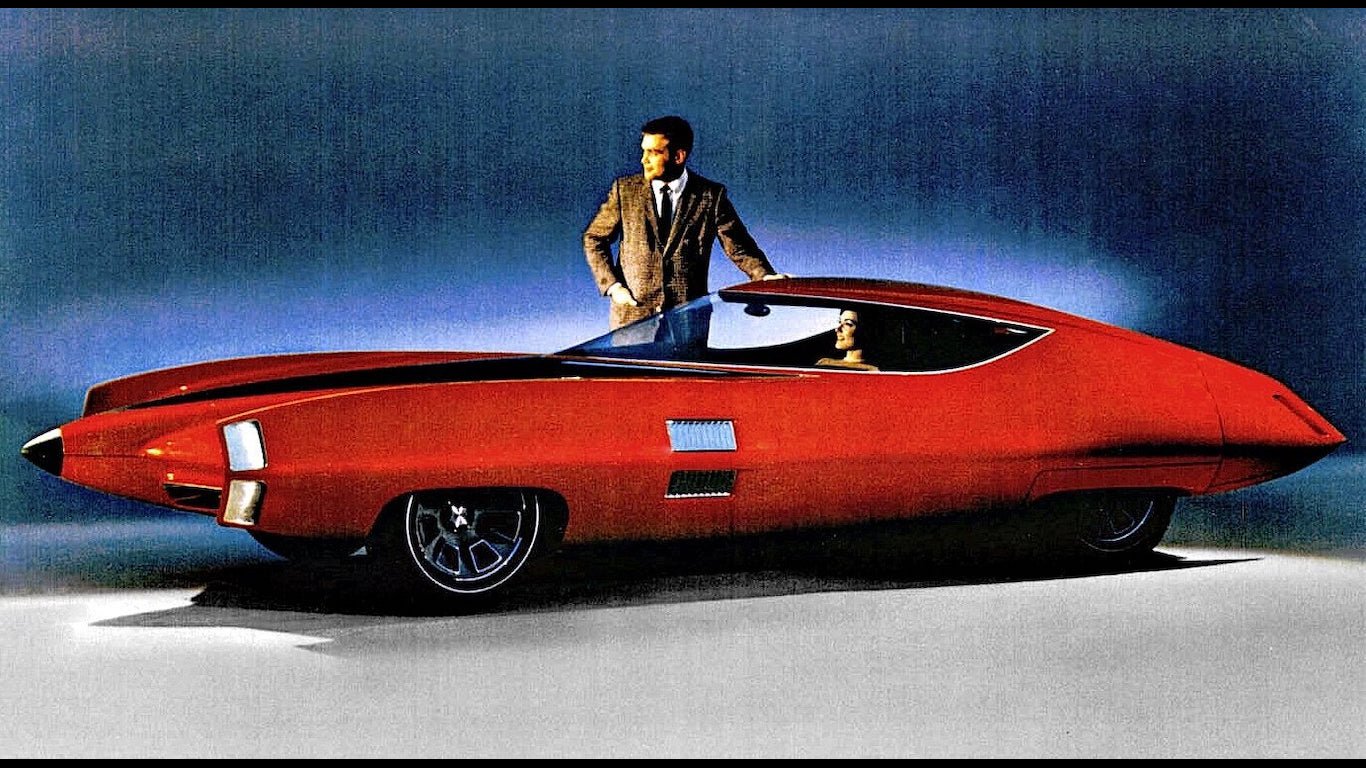
GM-X Stiletto
> Company: General Motors
> Year introduced: 1964
The sleek GM-X Stiletto, which debuted at the 1964 New York World’s Fair and was greatly influenced by aerospace design, included a nose cone in the front. The car featured steering inspired by airplane, toggle switch controls — 29 in all — and a three-way speaker system for inside/outside communications. Other forward-thinking features included climate control, obstacle sensors, and rearview mirrors. There were no doors. You entered the vehicle through a hatch.
[in-text-ad-2]
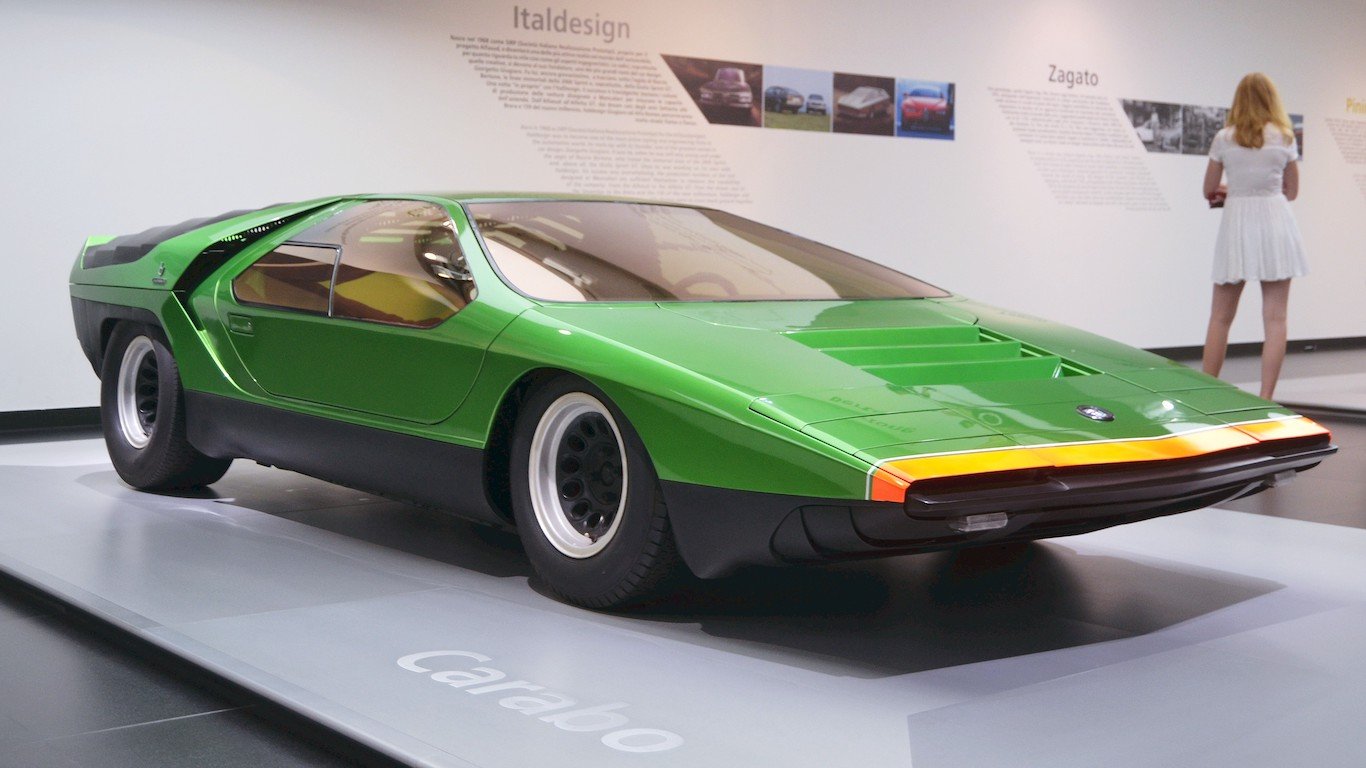
Alfa Romeo Carabo
> Company: Alfa Romeo
> Year introduced: 1968
The Alfa Romeo Carabo, first shown at the Paris Motor Show in 1968, was designed by Marcello Gandini, from the renowned Bertone studio. It was never intended to be produced. The Carabo name comes from the Carabidae beetles, whose green and orange coloring inspired that of the car. The car’s famous wedge design led the way for the wedge trend in the late 1960s. The Carabo is the predecessor of the Lamborghini Countach, and its featured scissor doors would have a major design impact on cars in the years to come.
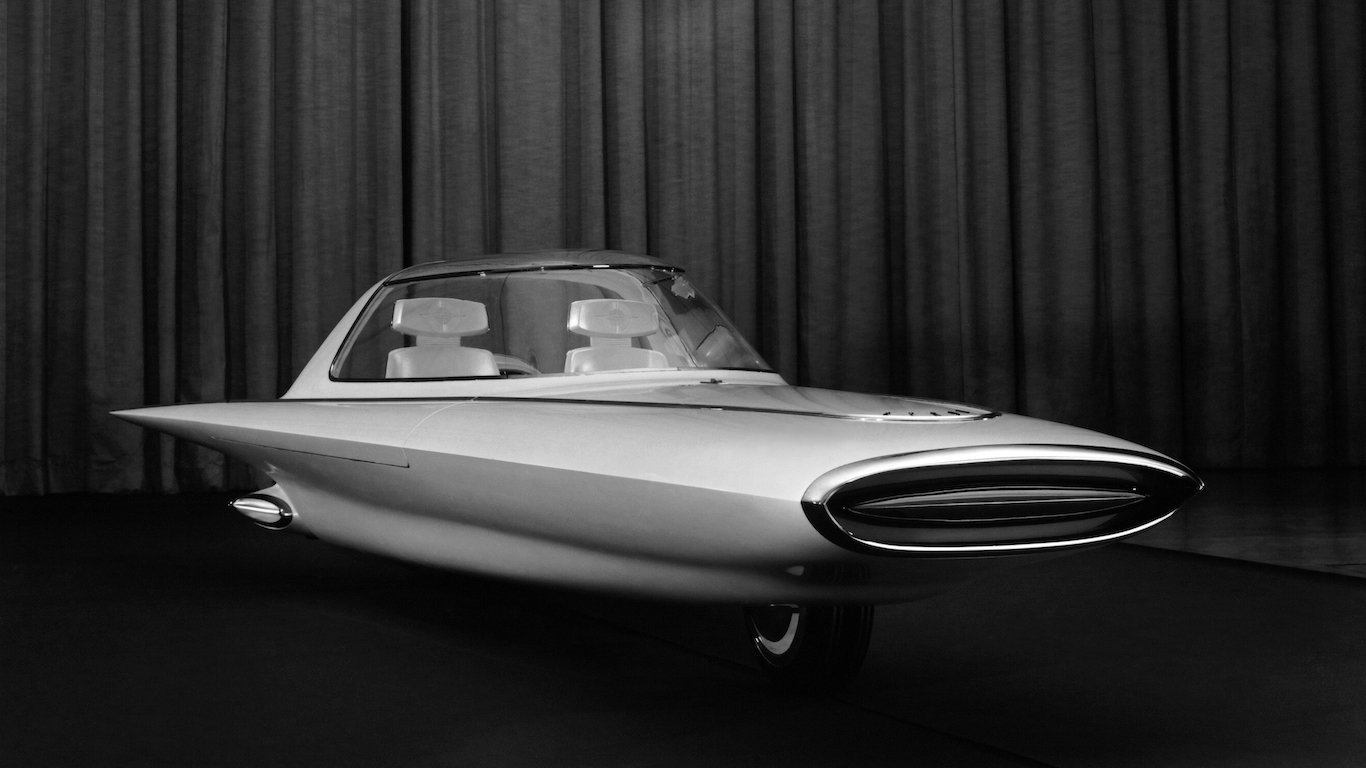
Ford Gyron
> Company: Ford
> Year introduced: 1961
Gyrocars, two-wheeled automobiles, have held a fascination for car designers, and the Ford Gyron is one such example. Shown at the 1961 Detroit Auto Show, the Gyron design was similar to that of a motorcycle, steadied by gyroscopes. The vehicle seated two people. At rest, the Gyron was supported by two small legs on either side. Distinguished auto designer Alex Tremulis was the car’s chief architect.
[in-text-ad]
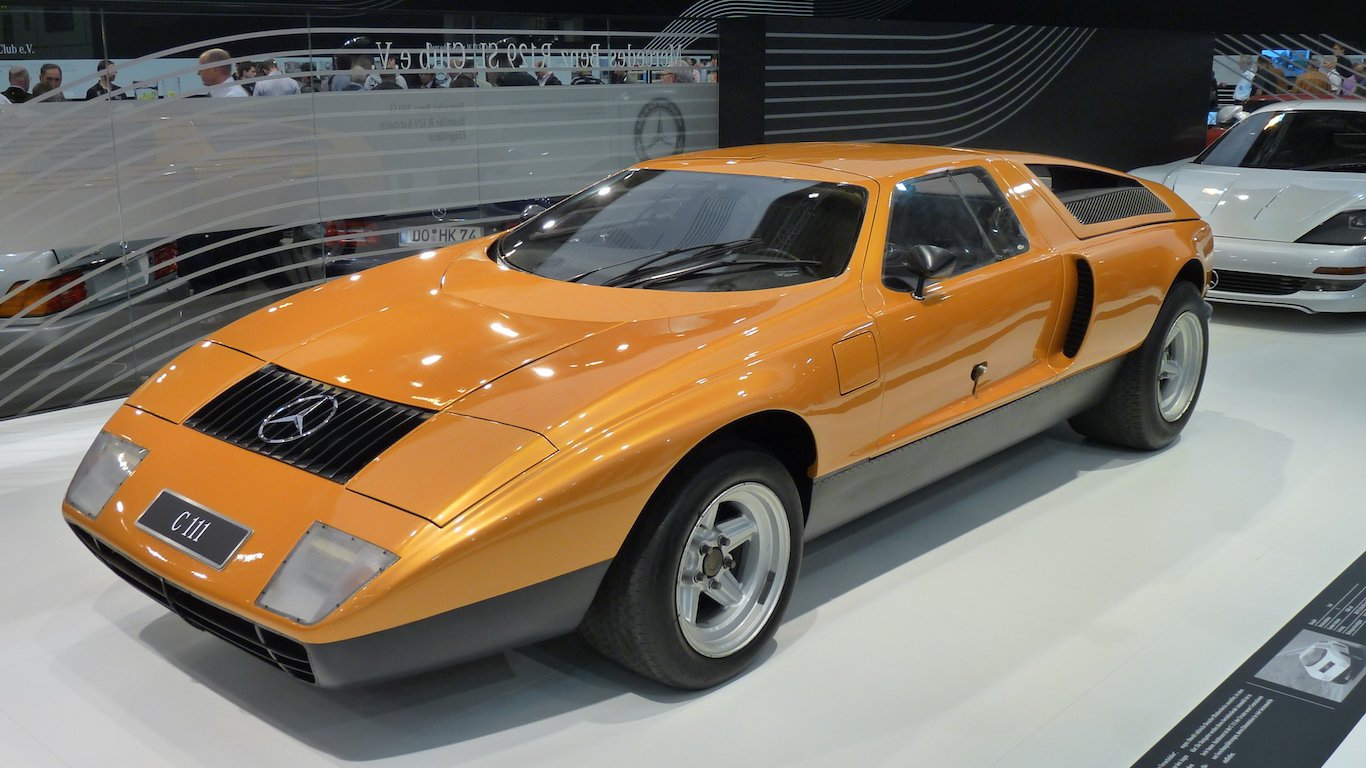
Mercedes-Benz C111 series
> Company: Mercedes-Benz
> Year introduced: 1969
In the late 1960s, Mercedes-Benz was tinkering about with new engine technologies, such as Wankel engines, diesel engines, and turbochargers. The C111-I was the first of a series of cars ending in 1977 used to test these new technologies. It proved to be the talk of the 1969 Frankfurt Auto Show. The C111-I’s Wankel engine generated 280 horsepower, fast enough to go from zero to 62 mph in five seconds. The German car’s aerodynamic body was constructed out of fiberglass, which lessened its weight.

Ford Seattle-ite XXI
> Company: Ford
> Year introduced: 1963
Few car concepts foretold the future better than the Ford Seattle-ite XXI. The concept car featured interchangeable fuel cell power units and body shells; computer navigation and mapping; and four driving and steering wheels. The power units featured fuel cells that could possibly use nuclear propulsion, believed then to be a safe future energy source. The vehicle was also the first to have six wheels, which designers believed would make the car easier to handle when cornering as the two front wheels would reduce the risk of hydroplaning.

Lancia Stratos Zero
> Company: Lancia
> Year introduced: 1970
Another car creation by Marcello Gandini, head designer at Bertone, was the futuristic Lancia Stratos Zero, which featured a large vertical instrument panel adjacent to the steering wheel. The car was just 33 inches in height, and you entered the Zero by lifting up the windscreen since there were no doors. The prototype first debuted at the Turin Motor Show in 1970 and was displayed at museums in Los Angeles and Atlanta. The Zero was featured in the 1988 Michael Jackson film “Moonwalker.” The car was renovated in 2000, and 11 years later it was purchased for $915,000.
[in-text-ad-2]

Vauxhall SRV
> Company: General Motors
> Year introduced: 1970
The Vauxhall SRV (SRV stands for styling research vehicle), designed by Wayne Cherry, was a sleek four-door, four-seat sports car that debuted at the London Motor Show in 1970. The car’s fiberglass body had a cab-forward design. The car featured rear wheels with hinged covers. In the back was a shuttered cover that hid the engine compartment. The SRV was a styling initiative and was not a functional vehicle.
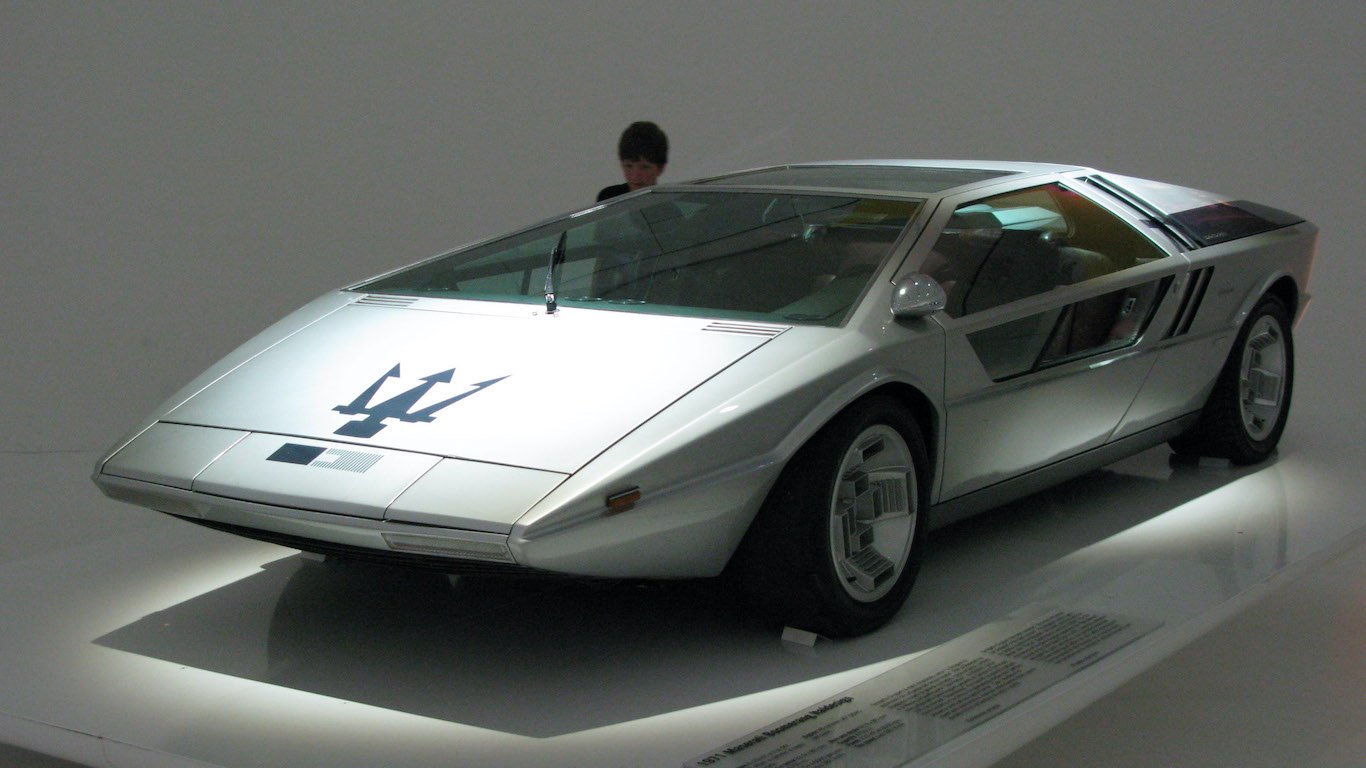
Maserati Boomerang
> Company: Maserati
> Year introduced: 1972
The eye-popping interior of the Maserati Boomerang included having the steering wheel and the gauges as part of a single console emerging from the dashboard. The steering wheel rotated around gauges that remained in place. The console held six gauges, three switches, and two levers. There was no speedometer gauge. Many of the buttons and dials in the interior were not labeled.
[in-text-ad]
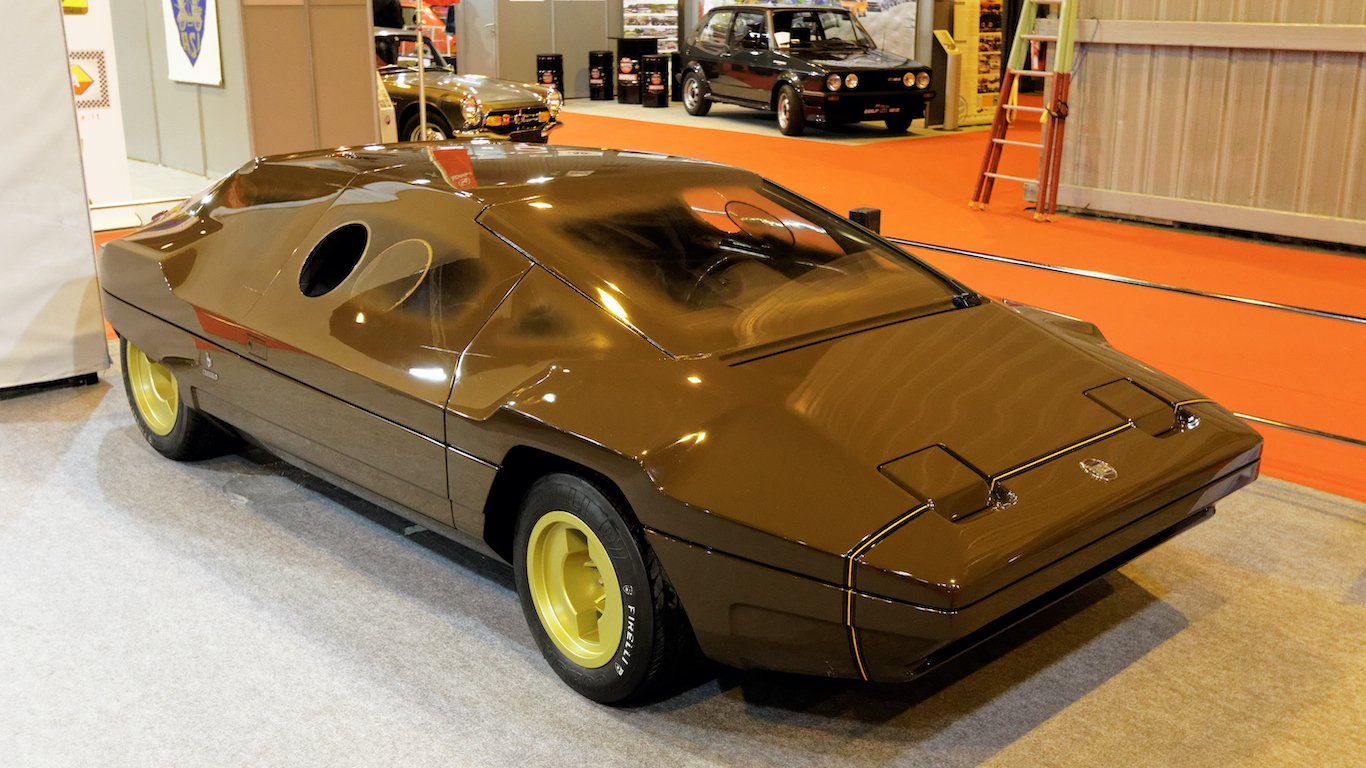
Lancia Sibilo
> Company: Lancia
> Year introduced: 1978
Another product of the Bertone design team, the curious interior failed to match the Lancia Sibilo’s eye-catching exterior. The interior had only a few features on the dashboard and looked almost unfinished. The steering wheel had no spokes and included three large buttons, plus a speaker. Beyond the steering column, the car’s instruments were located well up on the dashboard.
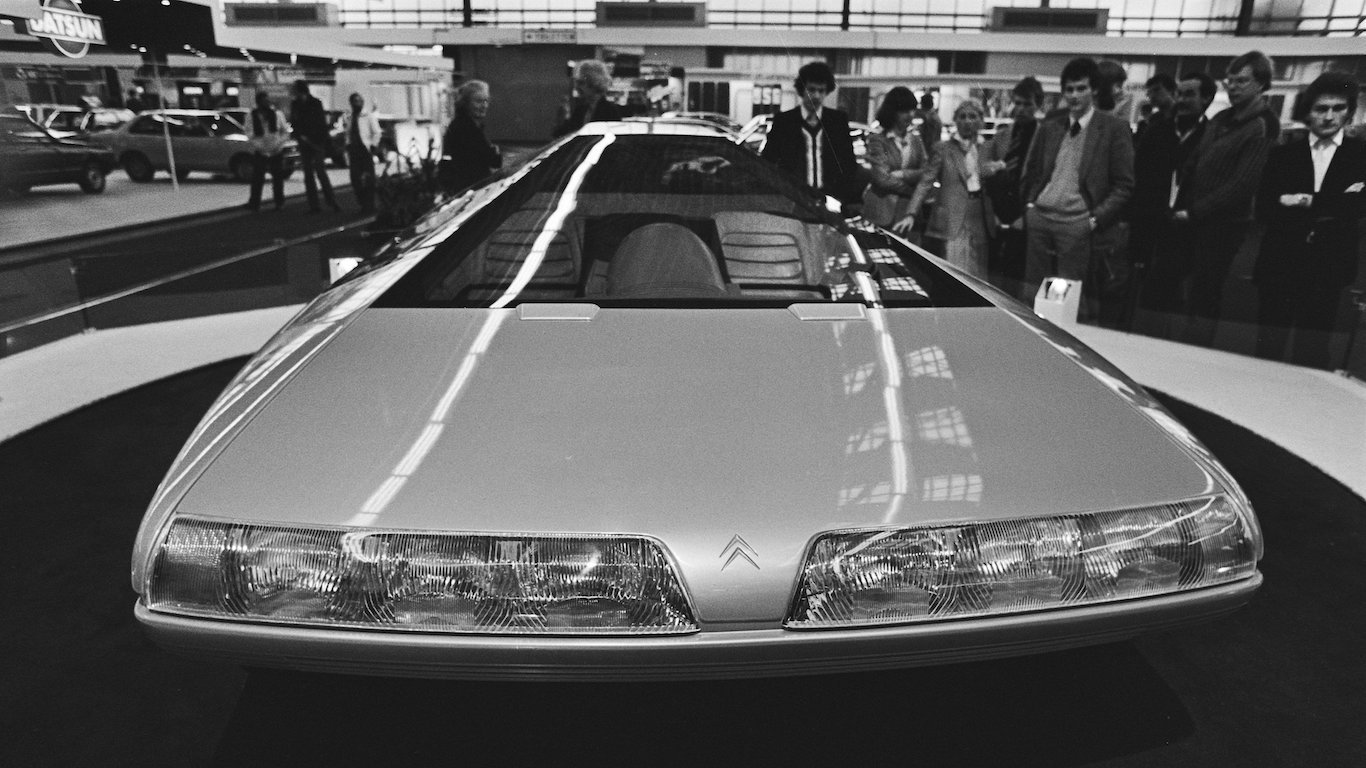
Citroën Karin
> Company: Citroën
> Year introduced: 1980
The canopy of the all-beige Citroën Karin, designed by Trevor Fiore, looked like a tent. The vehicle’s steering wheel with the cleft at the bottom was a design feature that gave one pause. Something resembling a keypad rested in the middle of the steering wheel, and on either side of the steering column were banks of buttons and switches. The driver seat was in the middle of the three-seater vehicle and slightly forward from the passengers.
[in-text-ad-2]
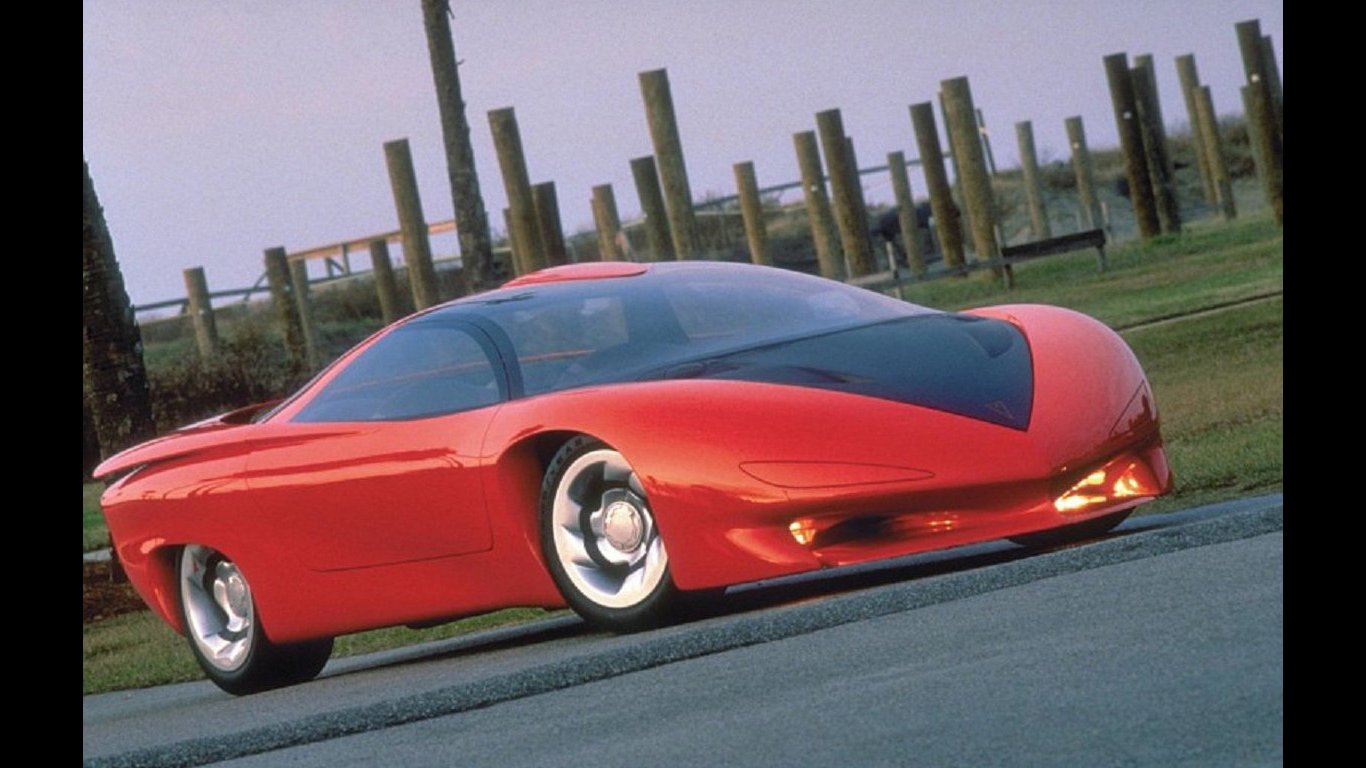
Pontiac Banshee IV
> Company: General Motors
> Year introduced: 1988
Pontiac Banshee IV looked sleek and forward-looking. The interior was somewhat curious. The vehicle had big, clunky buttons on the steering column, and it was cluttered with 23 buttons. The driver’s seat looked pretty cool as it resembled an astronaut’s cockpit.

BMW Nazca C2
> Company: BMW
> Year introduced: 1991
The BMW C2 built on the designs of the BMW Nazca M12. The latter vehicle has sprung from the imagination of Giorgetto Giugiaro and his son Fabrizio, who were inspired by Formula 1 and Group C cars. The vehicle frame of the more racetrack-oriented C2 was made from carbon fiber, unusual for the early 1990s, and weighed only 2,204 pounds. The C2’s engine had 50 more horsepower than its M12 predecessor, boosting it to 350 horsepower.
[in-text-ad]

Peugeot Moovie
> Company: Peugeot
> Year introduced: 2005
The Moovie was not a motion picture but a funky car concept that won Peugeot’s twice-a-year design competition. The Moovie’s somewhat minimal concept considered how smart cars would look in the future, with big round doors and space for two in the car’s cockpit. If it was supposed to be safe, it didn’t look like it.

Citroën Hypnos
> Company: Citroën
> Year introduced: 2008
Garish, swirling colors splashed across the interior of the midsize crossover Citroën Hypnos: the gauge was shocking red; the front seats were orange-yellow-green; and the rear seats were blue and purple. The shape of the seats were triangular, and the headrests dangled from the ceiling.

Tang Hua electric vehicle
> Company: Tang Hua
> Year introduced: 2008
The Chinese have been making a bid to crack the low end of the car market in the West, and many such cars debuted at the North American International Auto Show in Detroit in 2008. One entry was the Tang Hua electric vehicle, which looked like something cartoon characters would drive. The entire vehicle was made of fiberglass, meaning the car’s engine was a bit on the small side. The vehicle names in the Tang Hua line were a bit whimsical, too, such as “Detroit Fish,” “Strip of Cloud,” and “Book of Songs.”
[in-text-ad-2]
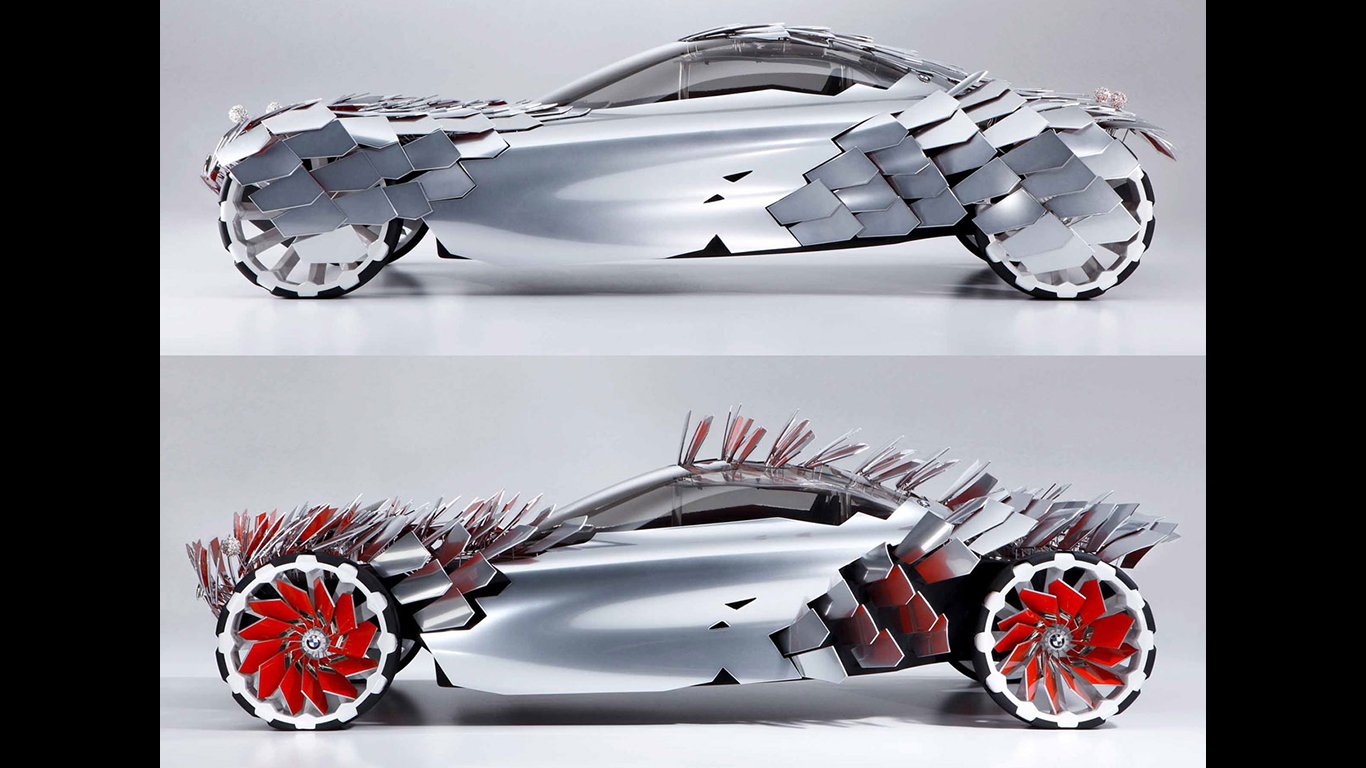
BMW LOVOS
> Company: BMW
> Year introduced: 2009
The BMW LOVOS, which stands for Lifestyle of Voluntary Simplicity, looked like it had scales all over its exterior. The concept was from German design student Anne Forschner and consisted of 260 movable and exchangeable parts that functioned as air brakes. They were also photovoltaic, and could track the sun’s movements and produce voltage when there is sunlight.
Sponsored: Want to Retire Early? Here’s a Great First Step
Want retirement to come a few years earlier than you’d planned? Or are you ready to retire now, but want an extra set of eyes on your finances?
Now you can speak with up to 3 financial experts in your area for FREE. By simply clicking here you can begin to match with financial professionals who can help you build your plan to retire early. And the best part? The first conversation with them is free.
Click here to match with up to 3 financial pros who would be excited to help you make financial decisions.
Thank you for reading! Have some feedback for us?
Contact the 24/7 Wall St. editorial team.
 24/7 Wall St.
24/7 Wall St.


